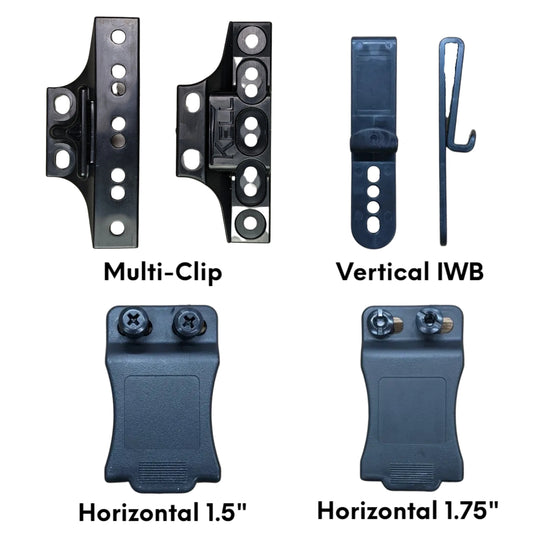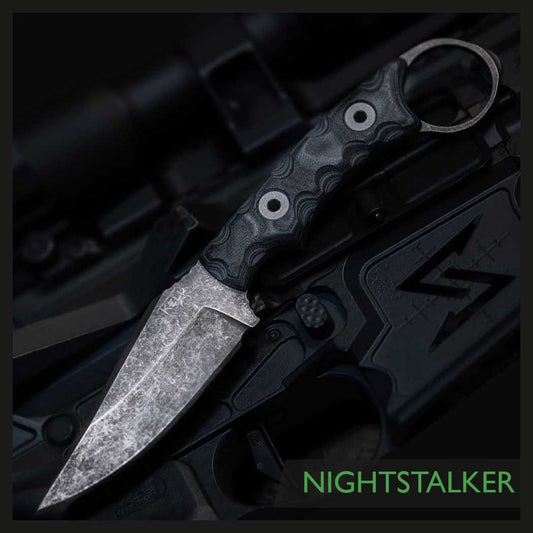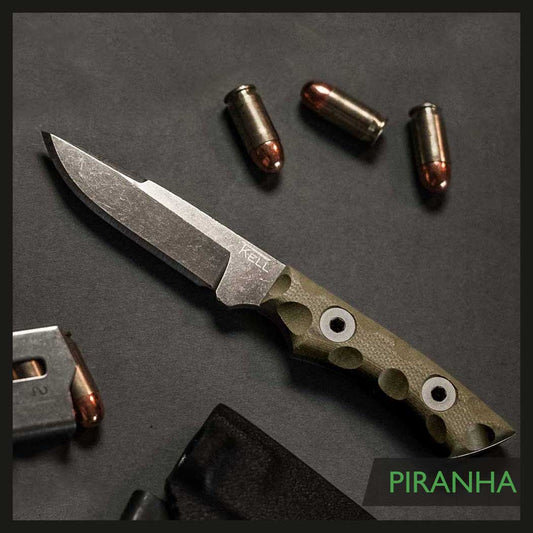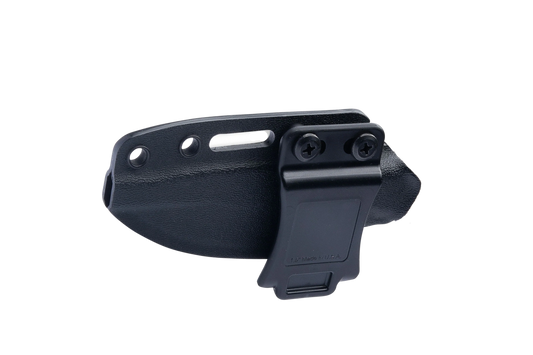It's important to keep your knives sharp. This is especially true for tactical outdoor knives. They are used heavily and need more care than kitchen knives.
Knowing how often to sharpen these knives matters a lot. How much you use them, what you cut, and their condition affects this. This guide will show you how to keep your knives sharp. It covers sharpening, honing, and preserving them for long life.
Understanding the Importance of Knife Sharpening
Keeping your knives sharp is really important. Otherwise, they can't perform well, and might even be unsafe. Knives go dull as you use them, leading to this problem. We’ll look into why this happens and the good reasons to keep your knives sharp.
Why Knives Get Dull
Dull knives happen with regular use. This wearing down makes the edge less sharp. Also, the tiny teeth on the blade can move out of line. This is why knives should be sharpened often. It keeps them working like they should. So, figuring out how often should you sharpen your knives is key. This keeps your knives reliable and sharp.
The Benefits of Sharp Knives
Having sharp knives is really great. They cut with less effort, which lowers the chance of accidents. Sharp knives are more precise, useful in risky situations. They're also better at cutting cleanly without damaging what you're cutting. By sharpening them regularly, you make your knives last longer and work better.
How Often to Sharpen Knives Based on Usage
How often knives need sharpening depends on how much they're used. Using a knife daily or for tough tasks means you should know when to sharpen it. This knowledge keeps your knife sharp for all uses.
Frequency of Use
Knives need more frequent sharpening if used a lot. Those who cut every day or use knives outdoors should check their knife often. Think about your use to decide when to sharpen.
Type of Cutting Tasks
What you cut affects how quickly a knife gets dull. Cutting hard items like meat or ropes wears down the blade faster. Knowing this helps set a good sharpening schedule for your knife.
Assessing Blade Condition
Regular checks on the blade are key. A quick visual look and some tests can tell you if it's dull. If cutting gets harder, it's likely time to sharpen the knife.
Recognizing the signs of a dull knife is part of knowing when to sharpen. Adjust your schedule as needed to keep your knives in top shape.
Differences Between Honing and Sharpening
Knowing the difference between honing and sharpening helps you take care of your knives. Both methods are key in making your knives last longer and work better. They each have their own use in knife maintenance. This affects how long your knives stay sharp.
What is Honing?
Honing straightens the blade's edge without taking away metal. With use, a knife's edge can bend a bit. Honing fixes this, keeping the edge aligned without wearing down the metal. It doesn't just make the knife sharper. It also helps you sharpen it less often.
What is Sharpening?
Sharpening makes a knife's edge new and sharp. It's done by removing a bit of the blade on a rough surface. But it's best to do this only when needed. Sharpening too much can make the blade wear out quicker. This means it won't last as long or work as well.
When to Hone vs. When to Sharpen
Choose honing if your knife is just a little dull or the edge is off. It keeps knives working well. But, if honing doesn't help anymore, it's time to sharpen. This decision helps you care for your knives better.
Methods for Knife Sharpening
Choosing the best knife sharpening methods is key to keeping your knives sharp. Different methods work for different skills and types of knives. It's important to pick what fits your needs best.
Using a Whetstone
Many experts agree that using a whetstone is one of the best ways to sharpen knives. It might take some time and practice to get good results. But, you get to control the angle and pressure, which is great for getting a very sharp edge.
Whetstones come in different grades, letting you make the edge as sharp as needed. This method is top choice for chefs and others who value a sharp knife.
Electric Knife Sharpeners
Electric sharpeners are good for those who want their knives sharp quickly and easily. They use automated parts to sharpen the edge fast. While not as precise as a whetstone, they can be a more efficient option. They're perfect for anyone who needs a sharp knife without much effort.
Manual Knife Sharpeners
Manual sharpeners offer a good balance between easy use and sharp results. They guide your blade at the right angle, making consistent sharpening easier. They're small and simple to use, perfect for home cooks and beginners in knife sharpening.
Professional Sharpening Services
For knives that are very special or difficult to sharpen, professional services are a top pick. These experts use advanced techniques to sharpen your knife with great care. This process can make your knife last longer, which is important for knife lovers.
It's a great option for anyone who needs their knives to be in top shape without the worry of doing it wrong themselves.
There are many ways to sharpen knives, like using whetstones, or going electric, manual, or getting professional help. Knowing your options helps keep your knives ready for use.
How to Determine If Your Knife Needs Sharpening
It's key to know when a knife needs sharpening. Ways to check include looking at its sharpness, visually inspecting the blade, and seeing how well it performs when used.
Testing the Blade
To test a knife's edge, use simple methods. For example, a sharp blade should easily cut through paper. Another common test is to check if the blade smoothly shaves your arm hair.
Visual Inspections
Look at your knife closely to check for dullness. Search for rounded edges or any nicks. A well-sharpened knife will look smooth and even. Remember outdoor knives need frequent checks due to hard use.
Performance During Use
How a knife performs when used tells a lot about its sharpness. If cutting feels more difficult or you need to press harder, it's likely dull. Keeping track of this helps maintain your knife's condition, especially for outdoor uses.
Common Mistakes When Sharpening Knives
Sharpening knives is a mix of skill, patience, and knowing how to do it right. Many people, from hobbyists to pros, often mess up. These mistakes can harm the blade's performance and how long it lasts. By learning about these issues, you can keep your knives in top shape.
Over-Sharpening
One big mistake is over-sharpening. You might think sharpening often is good for your knife. But, it can wear out the blade faster. Too much sharpening takes off metal the knife needs, lowering its quality and life span. Stick to a schedule for maintaining your knife, like what WÜSTHOF suggests, to avoid this.
Incorrect Angles
Using the wrong angles is another mistake. Every knife is made to be sharpened at a certain angle. Changing this angle can mess up how well the knife works. It's key to know and keep the right angle when sharpening knives. If you're sharpening knives meant for tough work, like tactical ones, wrong angles can hurt their performance.
Using the Wrong Tools
Using the wrong sharpening tools can cause problems. Not all sharpeners work the same way. A tool that doesn't match your knife can hurt it more than help. It's smart to invest in good tools and know how to use them for your knife. Quality tools are especially important for high-end knives. They ensure your knives are sharpened accurately and safely.
Maintaining Your Sharpened Knives
After sharpening, taking care of your knives is vital for their lasting sharpness. Proper knife maintenance includes a few important steps. First, make sure to store knives in a knife block or on a magnetic strip. This prevents them from touching and getting dull.
Honing your knife regularly is key to keeping it sharp. This process aligns the blade for better cutting. It's especially crucial for knives used outdoors or for tactical purposes. To hone, gently slide a honing rod over the blade's edge.
How you use your knife matters a lot for its long-term sharpness too. Never cut on hard surfaces like stone or metal. Instead, pick cutting boards made of wood or plastic. Also, don't misuse your knife, like using it to open cans. This misuse can really harm the blade.
For certain knives, like those for outdoor use, preventing rust is also important. Clean and completely dry these knives after use. Sometimes, applying a little bit of oil can help. This step is critical if your knives get wet or are in salty environments.
Regular care will keep your knives sharp and lessen the need for sharpening often. It also helps your knives last longer, which is good for your wallet and for the environment.
Conclusion
Keeping knives sharp and strong is key to good knife care. This article has shown why it's important to sharpen knives, especially for outdoor and tactical ones. Knowing how often to sharpen, what honing is, and how it differs from sharpening, is very important.
We looked at many ways to sharpen knives, from using whetstones to getting help from pros. Each method has its own advantages for different skill levels. We also talked about common errors, like sharpening too much or using the wrong tools. It's crucial to use the right methods to keep your knives efficient and lasting longer.
Moreover, doing things like storing knives correctly, keeping them honed, and preventing rust can help a lot. With the advice from this article, you're ready to keep a sharp edge on your knives. This will keep your outdoor and tactical knives trustworthy and sharp whenever you need them. Plus, it will make your tools last longer.
FAQ
How often should I sharpen my knives for tactical and outdoor use?
The need to sharpen your tactical and outdoor knives varies. It depends on how much you use them and what you cut. If your knife handles tough jobs often, like cutting hard materials, then it needs more regular sharpening.
If your knife sees less heavy use, you can sharpen it less frequently. Lighter uses mean you might have to sharpen it every few months. This keeps your knife in top shape for cutting.
What is the difference between honing and sharpening a knife?
Honing and sharpening both help make your knife cut better. Honing straightens the knife's edge but doesn't remove metal. It's like a quick fix. Sharpening, on the other hand, grinds away metal to create a whole new sharp edge. It's a more extensive process.
You should hone your knife often to keep it cutting well. Sharpening, though, is needed less frequently. Too much sharpening can actually damage your knife.
Why do knives get dull?
Knives get dull over time for a few reasons. Regular use wears down the edge. Cutting hard things can also blunt your knife. Even how you store it can play a part in making it dull.
What are the benefits of sharp knives?
Sharp knives make cutting tasks easier and safer. Because they're sharp, they glide through things with less effort. This reduces the chance of you hurting yourself. Plus, they give cleaner cuts than dull knives.
How do I assess the condition of my knife's blade?
You can tell if your knife needs attention by looking at it. Watch for dull or uneven edges. These are signs it might need a touch-up.
To really know, test your knife on simple tasks. Try cutting paper cleanly. Or see how it slices an onion. You can even check the sharpness by shaving a bit of hair off your arm. These quick tests will tell you a lot about your blade.
What are some common methods for sharpening knives?
Sharpening knives can be done in a few ways. You can use a whetstone, an electric sharpener, or do it by hand with a manual sharpener. Or, you can have a professional do it for you. Each way has its own benefits and challenges.
How often do you sharpen knives based on use?
If you use your knife hard and often, it will need sharpening every few weeks. Knives for more casual use might stay sharp enough for a few months. Tailor your sharpening schedule to match how you use your knife.
When should I hone my knife versus sharpening it?
Hone your knife often to keep it working well. Aim for every few uses. Sharpen it when honing doesn't work anymore. This could be every few months, depending on use. Or it could be sooner if you use it heavily.
What are the common mistakes when sharpening knives?
There are a few common errors to avoid when sharpening. Don't overdo it. Too much sharpening can actually harm your knife. Make sure you use the right angle for your knife. And only use tools that are meant for sharpening. This will help you avoid damaging your knife.
How can I maintain my knives after sharpening?
After sharpening, care for your knives by storing them correctly. Regular honing can extend time between sharpenings. Mindful use also keeps your knife working longer.
For knives used outside, keep an eye out for rust. Preventing rust is key when your knife meets more challenging conditions.
What are the signs that my knife needs sharpening?
You'll know your knife is dull when it doesn't cut well. If it slips while you cut, it might be dull. You might also see a dull edge when you look closely at it.







